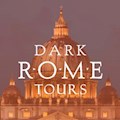Mount Vesuvius is a stratovolcano located on the Gulf of Naples in Campania, Italy. It is around 9km east of Naples, not far from the shore. In 79 A.D. it erupted, destroying the surrounding area and creating an important marker in Italian and European history. You can visit the area on a Pompeii day trip from Rome or read on to find out more about its eruption, and the city it froze in time…
The Eruption

Pompeii Forum
On 24th October in 79 A.D., Vesuvius erupted. Labelled as one of the deadliest volcanic eruptions in European history, it was seen and documented by roman administrator and poet, Pliny the Younger. His vivid eye-witness account provided a lot of the details and understanding that we have today about the day Vesuvius erupted.
It was a tragedy, and an unexpected one at that. The population of the local area was completely unprepared for what was to come on that fateful day - even when they first saw smoke, people were more curious than concerned. There had been frequent earth tremors in Campania, but the Romans did not seem to link these with volcanic activity at the time, as we would today.
The eruption lasted for two days - first, a high-altitude column was thrown upwards from the volcano with ash and pumice from this blanketing the entire area. Later, the pyroclastic flows came. A pyroclastic flow is a fast-moving current of hot gas and volcano matter, which moves away from the volcano. Typical speeds are around 100 km per hour, but they can reach speeds go up to 700 km/h.
Mount Vesuvius erupted due to its location within the Campanian volcanic arc (made up of Vesuvius and other volcanoes such as Flegrei and Stromboli) which sits on a tectonic boundary - where the African plate is subjected beneath the Eurasian plate.
Life in Pompeii

Thermal Baths of Pompeii
At the time of the eruption, Pompeii was under Roman rule. This had been the case since the 2nd century B.C. - it was a popular resort among Rome’s upper class. With elegant and elaborate housing and villas, as well as factories, shops, brothels, bathhouses, taverns and cafés, it was a town full of hustle and bustle. There was a 20,000-seat arena as well as marketplaces and places to sit and relax outdoors.
In 79 A.D. there was an estimated 12,000 people living in Pompeii, with the same again in its surrounding area. Despite previous earthquakes, especially a big one in 63 A.D., it was still a popular place to live and visit. People lived a simple life: waking with the sun and starting work early. Most houses had no water, so locals collected from the public fountains. Breakfast was bread and cheese.
People worked through the morning: shops were open for business, and farmers were hard at work in the fields. The markets were busy with people shopping and gossiping. At around midday, or slightly later, people would relax. Sometimes there would be a gladiator exhibition at the arena, which the Romans loved like we do modern day soccer or baseball. Lunch would typically consist of bread, fish, fruit and cake.
Afternoons were spent at the thermal baths. They were open to all classes of society, and they were fairly inexpensive. People could wash themselves as well as having fun and socializing - it was the place to be. More than just a place to cleanse, business and politics would often take place at the baths. They were a real hub of activity in the city of Pompeii before the eruption of Vesuvius.
Dinner was olives and eggs, and possibly some fish, meat and cakes.
After the eruption

Garden of the Fugitives
When Vesuvius erupted, there was so much damage caused to Pompeii and the surrounding area. Buildings and columns collapsed to the ground, and rooftops fell from houses. Surprisingly, most of the residents of Pompeii were lucky enough to escape, losing their home and their town but clinging to life. They took with them small valuables: coins, jewelry, lamps. The citizens of Pompeii had to entirely rebuild their lives; being that this was the ancient world, they didn’t travel far - probably just to the neighboring towns around Campania, but far enough to have to start all over again.
It is believed that around 2,000 people died at Pompeii when Mount Vesuvius erupted. Because of the destruction caused, some bodies were buried under 8 feet of material, or encased in layers of ash and pumice from the volcano. The city as a whole was preserved due to this “burial” - Pompeii was rediscovered in the 16th century and was practically frozen in time.
Today, there is plenty to see on a day trip to Pompeii. During tours to Pompeii from Rome, you can see what was left behind by the eruption of the most dangerous volcano on mainland Europe. You can explore the city and almost feel like you’re walking around in ancient times, with streets, buildings, frescoes and more laid out in front of you.
One of the most popular buildings in Pompeii is the brothel - the ancient lupanar - which contains stone beds, and paintings on the walls that elude to what might have happened within the building at one point. The incredibly well preserved baths are up there on the list of must-see buildings in Pompeii too. The Forum Baths are one of the most elegant baths in the city and something not to miss when you’re there.
You can also see The Forum itself - the heart of the city, and the equivalent to a ‘main square’ in other European cities - as well as the House of the Small Fountain, which was likely the home of somebody very wealthy, and houses a beautiful mosaic fountain. There’s the House of the Faun, and the Garden of the Fugitives where you can see plaster casts of the bodies found there.
Pompeii has so much to offer, and you can explore it all on our Pompeii day trip from Rome. Take time out of your Roman itinerary to visit this fascinating piece of history, that gives us incredible insight into the lives of Romans from millennia ago.
Visit the most dangerous volcano on mainland Europe, and the city it froze in time as you tour Pompeii from Rome.


